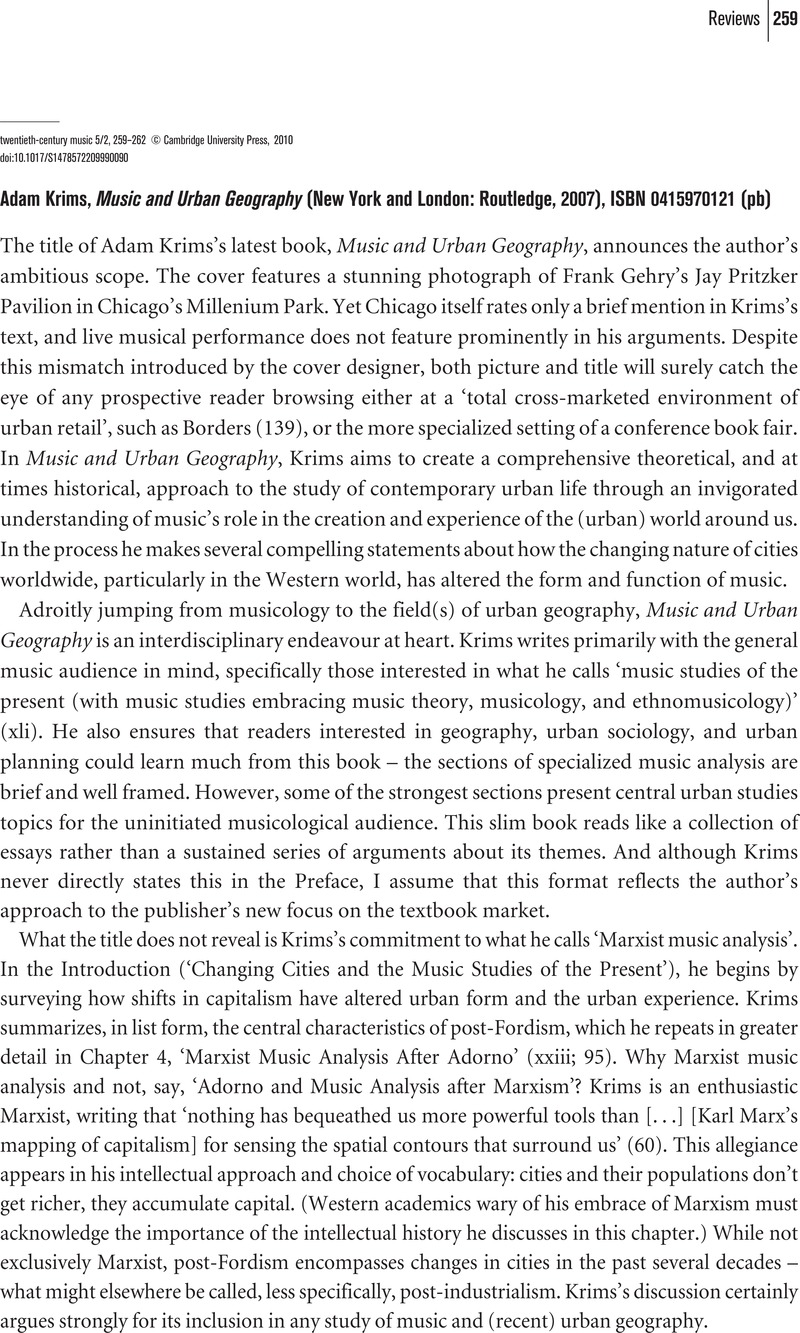No CrossRef data available.
Article contents
Adam Krims, Music and Urban Geography (New York and London: Routledge, 2007), ISBN 0415970121 (pb)
Published online by Cambridge University Press: 05 February 2010
Abstract

- Type
- Reviews
- Information
- Copyright
- Copyright © Cambridge University Press 2010
References
1 Much of this chapter was previously published in an earlier collection as ‘Marxist Music Analysis without Adorno: Popular Music and Urban Geography’, in Analyzing Popular Music, ed. Allan Moore (Cambridge: Cambridge University Press, 2003), 131–57. The text does not explain why he changed the title of this chapter.
2 Adam Krims, Rap Music and the Poetics of Identity (Cambridge: Cambridge University Press, 2000).
3 For a discussion of a another localized, spatialized music practised during Carnival see Frederick Moehn's ‘The Disc is not the Avenue: Schismogenetic Mimesis in Samba Recording’, which analyses the samba and sambódromo in Rio de Janeiro; see Wired for Sound: Engineering and Technology in Sonic Cultures, ed. Paul D. Greene and Thomas Porcello (Hanover, NH: Wesleyan University Press, 2004), 47–83.
4 Henri Lefebvre, The Production of Space, trans. D. Nicholson-Smith (Oxford and Cambridge, MA: Blackwell, 1991).
5 Krims continues that this general notion of cities ‘may be disproportionately shaped by the fate of certain particular cities, especially New York City and Los Angeles’ (7).
6 Some of these apparent editing oversights do detract from an appreciation of Krims's significant contribution. For example, Music and Urban Geography recounts an anecdote about a Time magazine cover twice in chapter 3, and the list on page 95 mentions the same concept twice, at numbers 5 and 10.


